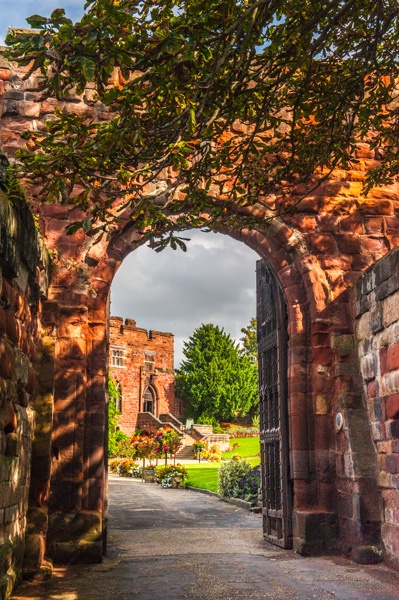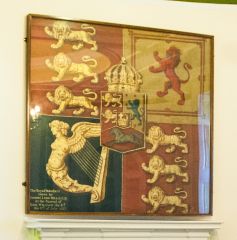
Montgomery was also responsible for founding the great Benedictine Abbey of Shrewsbury, across the Severn from the castle.
There is, however, a suggestion that the first Norman fortification at Shrewsbury was begun by William himself around 1068, and that Earl Roger simply enlarged and strengthened William's existing castle. Nothing remains of the first Norman castle beyond stone supports for the castle mound. Roger's son, Robert of Belleme, inherited the castle, but when Robert fell from royal favour in 1102 the castle was seized by the crown.
It remained royal property until the 16th century, with the exception of three brief interludes. The first of these came in 1138, during the conflict between Stephen and Maud (described so well in the Brother Cadfael novels by Ellis Peters) when the sheriff of Shrewsbury allied briefly with supporters of Queen Maud.

The second came in 1215 when Llewellyn seized the town and castle. Finally, during the Baron's War between Edward III and the supporters of Simon de Montfort, the castle was briefly held by the king's enemies.
Edward I greatly enlarged the Norman castle around 1300. He built a storeroom, a great hall, and a large tower at each end of the hall. It gives some idea of the massive strength that Edward considered necessary when you consider that the inner walls were over 5 feet thick, and the outer walls over 8 feet thick. After Edward's eventual success in his conflict with Wales, the castle fell gradually into disuse and decay.
This changed in 1642, at the height of the Civil War, when the current main tower was added, plus a two-storey postern gate giving onto the river. At this time the walls of Edward's great hall were raised by 10 feet and an upper floor inserted.
Around 1790 further alterations took place under the direction of architect and engineer Thomas Telford, who built the watchtower now known as Laura's Tower. Telford rebuilt the castle interiors to serve as a comfortable private dwelling.

A final major restoration of the castle structure took place in 1926 under Sir Charles Nicholson, by which time the castle had passed into the hands of the Corporation of Shrewsbury, who maintain it today.
Within the castle is the Shropshire Regimental Museum, containing mementoes, pictures, uniforms, medals, and archives of the regiment dating back to the 18th century.
The structure we see today consists of the rectangular great hall with two towers, contained within a curtain wall. The castle is entered through an entry arch dating to the 12th century, while the bailey walls are probably from 1223. The castle grounds are usually open to visitors during the day, but there is a charge to visit the museum.








 We've 'tagged' this attraction information to help you find related historic attractions and learn more about major time periods mentioned.
We've 'tagged' this attraction information to help you find related historic attractions and learn more about major time periods mentioned.




